 Weird Stuff
Weird Stuff  Weird Stuff
Weird Stuff  Politics
Politics 10 Political Scandals That Sent Crowds Into the Streets
 Weird Stuff
Weird Stuff Ten Bizarre Facts About The Doge Meme
 Our World
Our World 10 Ways Your Christmas Tree Is More Lit Than You Think
 Movies and TV
Movies and TV The 10 Coolest Stars to Set Sail on The Love Boat
 History
History 10 Things You Didn’t Know About the American National Anthem
 Technology
Technology Top 10 Everyday Tech Buzzwords That Hide a Darker Past
 Humans
Humans 10 Everyday Human Behaviors That Are Actually Survival Instincts
 Animals
Animals 10 Animals That Humiliated and Harmed Historical Leaders
 History
History 10 Most Influential Protests in Modern History
 Weird Stuff
Weird Stuff 10 Funny Ways That Researchers Overthink Christmas
 Politics
Politics 10 Political Scandals That Sent Crowds Into the Streets
 Weird Stuff
Weird Stuff Ten Bizarre Facts About The Doge Meme
Who's Behind Listverse?

Jamie Frater
Head Editor
Jamie founded Listverse due to an insatiable desire to share fascinating, obscure, and bizarre facts. He has been a guest speaker on numerous national radio and television stations and is a five time published author.
More About Us Our World
Our World 10 Ways Your Christmas Tree Is More Lit Than You Think
 Movies and TV
Movies and TV The 10 Coolest Stars to Set Sail on The Love Boat
 History
History 10 Things You Didn’t Know About the American National Anthem
 Technology
Technology Top 10 Everyday Tech Buzzwords That Hide a Darker Past
 Humans
Humans 10 Everyday Human Behaviors That Are Actually Survival Instincts
 Animals
Animals 10 Animals That Humiliated and Harmed Historical Leaders
 History
History 10 Most Influential Protests in Modern History
10 Dreadful Places Named For Horrifying Events
There are some places that have a very tainted past. Maybe people died there, or still do. Whether it’s through human activity or the forces of nature, many of these places earn a creepy nickname for their reputation. These are 10 places whose nicknames encourage you to stay away and whose pasts do everything to reinforce the message.
10 The Railway And Road Of Bones
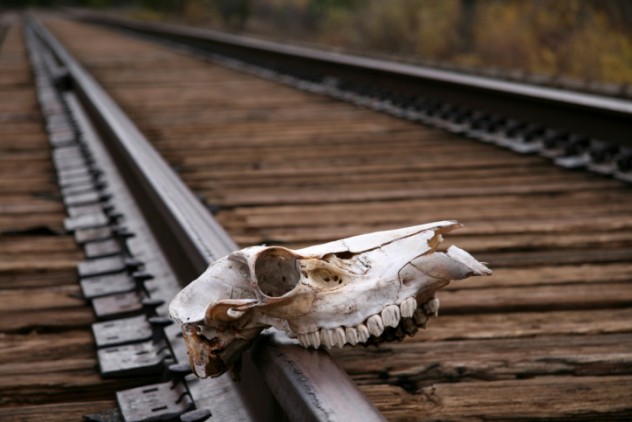
Soviet Russia was not a very nice place. Two legacies of the hell inflicted on people under Stalin’s regime are the Railway of Bones and the Road of Bones. While they’re different places, their stories are very similar.
The railway was part of Stalin’s plan to conquer the Arctic, egotistically named the “Great Plan for the Transformation of Nature.” Stalin wanted to build a 1,600-kilometer (1,000-mi) railway through Siberia linking two cities. Unsurprisingly, he chose to use 300,000 political prisoners for labor. One-third of them died. Temperatures during winter plummeted to -50 Celsius (-58 F). The workers had to build their own log cabins, though some were forced to sleep in canvas tents.
During the summer, the area was plagued with mosquitoes. Guards would strip workers naked and tie them up among the insects as a punishment. Only 595 kilometers (370 mi) of the railway were completed between the project’s start in 1940 and Stalin’s death in 1953. Though it is currently rusting into nothing, there are plans to rebuild and finish it.
The M56 Kolyma highway is known as the Road of Bones. It also crosses Russia from east to west. It is almost possible to use due to the mud and rain in the summer and the snow and ice in the winter. It’s considered a deadly challenge for extreme off-road enthusiasts, yet it is the workers that were shot and buried underneath the road for not working hard enough that earned it its nickname. It’s very literally built on human skeletons.
9 The Diver’s Cemetery
The Blue Hole in the Red Sea sounds like a nice colorful place. Its nickname gives away the true nature, though. The Diver’s Cemetery is so-called because it’s the most deadly dive site on Earth. It’s located just off the coast of Dahab in Egypt. Despite—or perhaps because of—its reputation, it attracts a lot of extreme scuba enthusiasts. Many don’t leave.
The dive has been compared to Mount Everest. It’s seen as a challenge that divers want to undertake. However, many of them simply aren’t capable, and it becomes their final resting place. The number of people who have died there in the recent past is hard to pin down, but the minimum estimate is around 130 in the last 15 years.
One of the biggest killers is a false sense of security. The water is calm and it’s just off the beautiful sunny beach, yet the hole is very deep. The record for the deepest dive there is held by Tarek Omar at 209 meters (686 ft). At that depth, pressure is 20 times what it is at the surface. Omar knows more about the hole than anyone else, but that’s because he needs to—it’s his job to retrieve the bodies. He once found a pair of divers clinging to each other on the bottom. At least one person hasn’t been found at all.
One of the hole’s biggest killers is nitrogen narcosis. This particular medical condition has its own eerie nickname, “rapture of the deep.” The increased pressure of the air causes nitrogen to be absorbed by the brain and nervous system. This leads to feelings of lightheadedness combined with euphoria and a sense of being carefree. This means that the ability to make rational decisions becomes impaired, so people are more likely to dive deeper than they should.
If you’re curious what it’s like to get into trouble and die there, you can watch the video above. It’s from the camera of Yuri Lipski, who perished there in 2000. Omar recovered the camera along with Lipski’s body. Around six minutes into the video, Lipski begins to panic. For a minute, he grunts and kicks up sand. Then, stillness.
8 The Tower Of Death
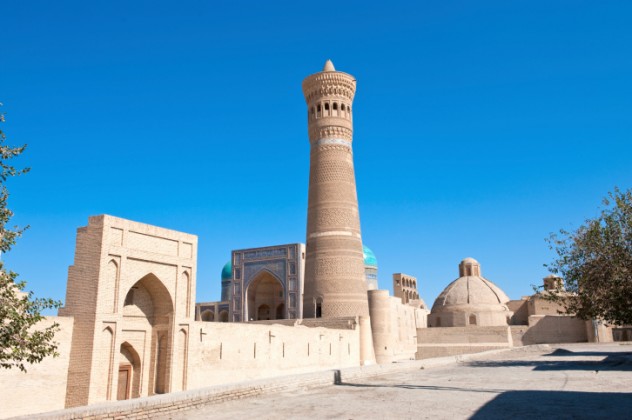
The Kalyan Minaret in Bukhara, Uzbekistan is a beautiful building. Standing at 46 meters (151 ft) tall, the tower used to be part of a mosque, and the call to prayer would be given from the top. The mosque is long gone, but people still flock to see the tower today. Even Genghis Khan was a fan. When he ransacked the city in 1220, he liked the tower so much he ordered it should be left intact.
There are 105 steps to the top of the tower, where you can look out over the city—or, alternatively, be thrown out to your death. That particular method of execution earned the minaret its nickname, “The Tower of Death.” Genghis himself is said to have killed people that way. One ruler had criminals sewed up in a sack before being tossed out so that they didn’t make a mess of the square below. The practice is said to have been going on as recently as 1920.
One legend around the tower involves the wife of an unnamed ancient ruler. It’s said the wife gave charity to people behind her husband’s back, and when he found out, he ordered she be thrown to her death. The wife made a last request to be able to wear all of her clothes at once during the execution. When she was tossed to her doom, all of her skirts flared like a parachute and she drifted safely to the ground. Her husband was impressed by this display of cunning and she was pardoned, but we can’t help but think their relations may have been a little strained after that.
7 The Death Cave
The so-called Death Cave is appropriately located in Devil’s Canyon, Arizona. The US Forest Service recommends the area for its “picturesque rocks.” The rocks in question are said to “resemble distorted human forms,” which allegedly earned the canyon its name, but its haunting history may have something to do with it, too.
In the 1870s, the canyon was used by Apaches raiding Navajo settlements in the area. The Navajos attempted a new strategy to combat the raiders—when the Apaches attacked, they sent men to block off the exit to the canyon at the southern end. The raiders never reappeared and a search of the canyon failed to turn them up. It was as if they’d vanished without a trace.
In 1878, Apaches raided a settlement, killing everyone except for three girls they took prisoner. Navajo chiefs from the district raced south again to ambush the raiders. Once again, the Apaches vanished. Scouts were dispatched to scour the place. The Apaches’ secret was discovered when a scout felt hot air rising from the ground. He found a crack and heard voices. He realized that there was an underground cavern and that the Apaches were in it.
The Navajos descended on the area in force and found the entrance in Devil’s Canyon. It was hidden by a stone ridge and just wide enough for a horse to pass through. The Navajo killed the two guards outside and plotted their revenge. They filled the entrance of the cave with dry grass and wood while riflemen picked off any Apaches that tried to escape through the small passage. When the entrance was full, they set it alight.
The first fire didn’t kill all of the Apaches, and the next day, they sent someone to negotiate for their freedom. The Navajos agreed to let the Apaches go in return for the three captive girls, but the girls had already been tortured and killed. The Navajos began the fire anew. It took two days for the rocks to cool down before they went inside.
The Apaches had tried to block the smoke and heat by stuffing their horses into the cave entrance, but it didn’t work. Around a dozen Apaches had suffered burns and the rest were found suffocated in a second chamber further back. A total of 42 people were killed.
The cave is located almost directly below the Arizona ghost town of Two Guns, so it’s a popular stop off for people interesting in a bit of historical exploration. The story has a more impact when you hear it from someone while walking through the cave, pointing to the piles of rocks that the panicking Apaches piled up at the entrance and inviting you to imagine how terrified they must have been.
6 The Fort Of Death
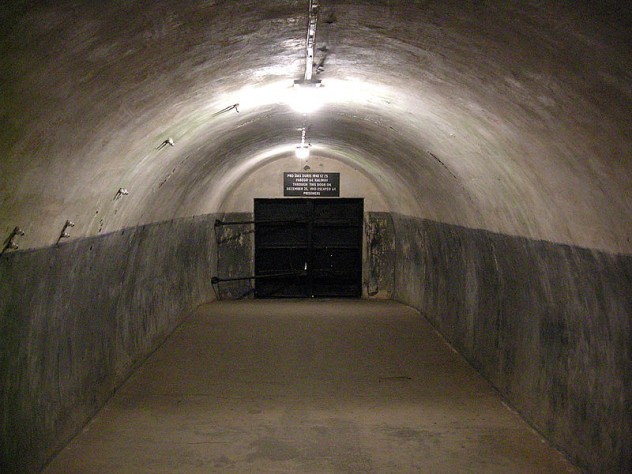
The Ninth Fort was built by the Russian Empire in the Lithuanian city of Kaunus in the 19th century. It was actually one of several numbered units that made up a larger fort. It was used through WW I and saw off a German attack in 1915, so it was no stranger to death. However, it didn’t earn the name “Fort of Death” until 1941, when it was under the control of the Nazis.
The Nazis took Kaunus in June 1941, when Soviet forces retreated. Within weeks, a Nazi killing squad had rounded up thousands of Jews to be systematically shot. The majority of the murders were carried out in the Ninth Fort. The rest of the Jews were forced to live in a ghetto. By August, there were 29,000 Jews being forced to live in a squalid part of the city.
The event that sealed the nickname Fort of Death occurred on October 29, 1941. During the day before, 9,000 Jews had been rounded up from the ghetto and taken to Ninth Fort. Nearly half of them were children. They were stripped, lined up beside mass graves, and gunned down in groups. By the end of the day, they had all been killed. Later, the Nazis attempted to cover up the crime by burning the bodies, forcing Jews from the ghetto dig open the graves. When the work was complete, the Jews were all shot.
5 Deadly Mountains
The Eiger, which translates as “the ogre,” is the deadliest mountain in the Alps. Its northern face was the last in the range to be conquered. Its German name, Nordwand, means “north wall,” but its deadly reputation has led climbers to change that to Mordwand, or “murder wall.” It was first conquered by a combined team of Germans and Austrians in 1938, an achievement that was a bit of a propaganda win for the Third Reich.
As deadly as the Eiger may be, it’s nothing compared to Nanga Parbat. That Himalayan beast belongs to an exclusive club of mountains with peaks over 8,000 meters (26,247 ft) tall and is the ninth highest in the world. It wasn’t conquered until 1953, by which time it had already claimed over 30 lives. It’s known locally as “Maneater” and “Mountain of the Devil” due to the regularity of deaths there. Even local road signs refer to it as the Killer Mountain.
Climbing Nanga Parbat became an even deadlier prospect in 2013. The Taliban attacked the mountain’s base camp and murdered 10 climbers. When claiming responsibility for the attacks, a Taliban spokesman said that they were carried out by an arm of the organization specifically aimed at killing foreigners in Pakistan, yet that hasn’t stopped people from trying to accomplish the mountain’s final challenge, a climb in winter.
Only two “eight-thousanders” have never been climbed successfully during winter. One is the infamous K2, itself nicknamed “The Savage Mountain,” and the other is Nanga Parbat. On top of being a difficult climb, the height from base camp is about 1000 meters (3,281 ft) more than it is on Everest and the weather is worse. Simone Monro, an Italian climber, has a good chance at being the first. He’s already done the first winter ascent on three other eight-thousanders—a joint record—and isn’t put off by the Taliban. He tried the ascent in 2012 and is having another go in 2014. Even though he’s probably the most likely person on the planet to be able to do it, he rates his own chances at around 15 percent.
A slightly safer adventure up a mountain with a scary nickname is Huayna Picchu in Peru, known as the “Hike of Death.” While most people make it up and down safely, the video above will give you vertigo alongside an idea of where the nickname came from. It’s even scarier than it looks—the bush under the stairs isn’t growing from the ground, but on the side of a sheer drop. Stone steps, just a few inches wide, stick out the side of a mountain thousands of feet in the air. It’s probably worth buying a ticket and making the ascent, though, for the spectacular view. Make sure to show up early—authorities limit the climb to 400 people each day.
4 Tunnel Of Death And Blood Alley
Not content with having a road that earned an unsettling nickname during construction, Russia has a stretch of highway beneath Moscow that’s been called “The Tunnel of Death” since it opened. The reason for that can be best summarized in the video above, which shows car after car skidding around a corner into the concrete walls. The 2.2-kilometer (1.4-mile) tunnel is underneath a river, which leaks onto the road. Moscow’s harsh winters freeze the water leaking from the river, creating terrifying driving conditions.
On the other side of the Cold War, America has the highway California 46, specifically a stretch nicknamed “Blood Alley.” The road claimed the life of James Dean in 1955 before it was upgraded in the 1960s. The name refers to a particular 35-kilometer (22-mi) section, which killed dozens of people during the 1990s. The toll peaked at 14 deaths for the year 1995.
The most unusual deaths on the highway also occurred in 1995. A truck carrying broccoli accidentally dumped 22 crates of the vegetable onto a car. The smaller vehicle was crushed, buried in a sea of green. A man inside was killed, while a woman received serious injuries. It sounds like an urban legend, but it at least meets the Internet’s minimum criteria of “pics or it didn’t happen.” The same thing happened again on a different road in California in 2012, suggesting that the state just isn’t very safe at moving groceries.
3Suicide Bridges
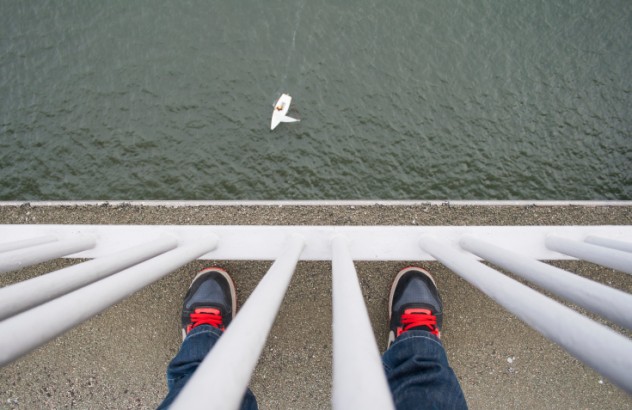
Many bridges in the world are known as popular suicide spots, yet two of them are so strongly associated that locals actually refer to them as “Suicide Bridge.” The Colorado Street Bridge in Pasadena, California has seen over 100 suicides since it was built in 1913. The city council have put up signs to discourage people from jumping, but the local Pasadena Sun is never short of headlines that begin “Body Under Bridge.”
Pasadena’s Suicide Bridge has nothing on the Nusle Bridge in Prague, though. The Czech bridge wasn’t finished until 1973, yet the lowest death toll estimates since then come in at 250. The bridge passes above a residential area and locals are used to finding crumpled bodies on the pavement. One teenager explains that blood on the ground is a normal sight on his walk home from school and that “one time, my neighbor took home a part of someone’s brain in a cup.”
In 2007, the city installed a sheer metal barrier along the length of the bridge to prevent people from being able to get over. They hired a professional climber to do his best, but he gave up after 10 tries and declared that climbing the barrier was “impossible.” The fact that fewer people now jump means that fewer people now die, but the name “Suicide Bridge” probably isn’t going away for some time.
2The Slaughter Rivers
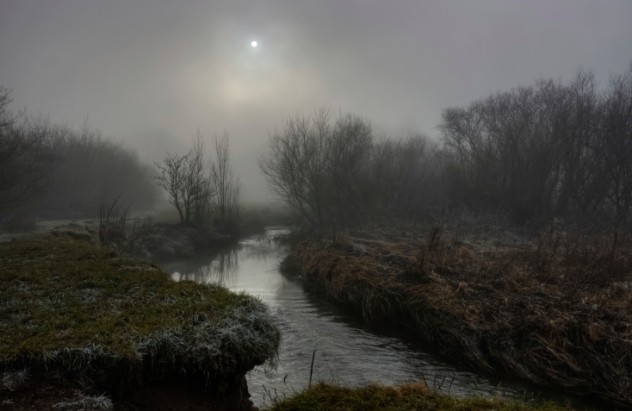
The word matanza roughly translates from Spanish as “slaughter.” There are two rivers that take their name from the word, the Matanza River in Argentina and the Matanzas River in Florida. They earned their names in very different but equally awful ways.
Matanzas in Florida earned its name in 1565, when control of Florida was being contested by the French and the Spanish. Philip II of Spain was annoyed when 200 Frenchmen established a fort in what was regarded as Spanish land, conveniently ignoring the 35 groups of Native Americans that lived in Florida at the time. Catholic Philip sent General Pedro Menéndez de Aviles with 800 men to clear out the French Protestants.
The French sent 600 more men to bolster their defenses against the Spanish reinforcements, but were thrown off course by a hurricane and washed up south of where they’d planned to be. In the meantime, Menéndez and his men had wrecked the French fort. When the General learned about the shipwreck survivors from some natives, he sent a translator to encourage them to surrender.
When the French eventually reached the Spanish fort, Menéndez said he would let them live if they converted to Catholicism. A few agreed, but Menéndez had the rest slaughtered beside the inlet of the river. In total, he killed 245 men, and the river earned its name as a result.
The Matanza River in Argentina got its name from the tanneries and slaughterhouses that dump their waste there. In recent years, its name has become sadly more appropriate. The river is one of the most polluted places on Earth and 12,000 people along its banks live in conditions deemed unfit for habitation. Diarrhea, cancer, and respiratory diseases are major problems. It’s the only place on this list that didn’t earn its name through the deaths of humans, yet it currently threatens to kill more than all the others put together.
1 The Pit Of Bones
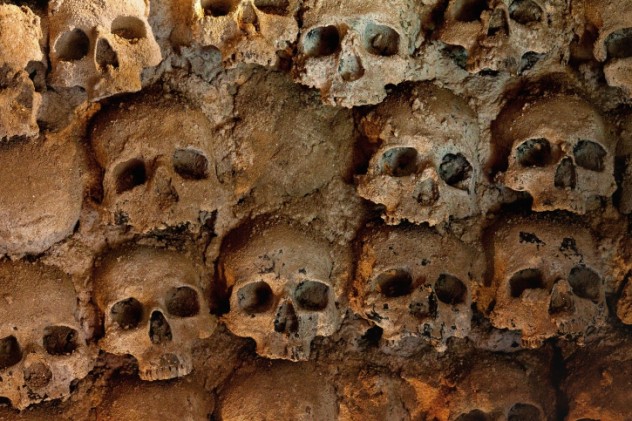
The Pit of Bones combines an eerie discovery with immense scientific value. It’s a cavern at the bottom of a sheer vertical shaft of around 13 meters (43 ft) in a mountain in Spain. Any animal that happens to stumble into the hole is going to die down there. Scientists have found the remains of 160 cave bears, along with wolves, lions, and other big cats. They have also found thousands of human bones, which come from at least 30 individuals.
Researchers are pretty certain that the animals fell down there by mistake. Many of the bones, even those of the large predators, have been gnawed. That suggests their bodies became a last desperate meal for the next animal to survive the fall. While it’s certainly possible that a person could’ve met the same fate, scientists believe the cave was actually used to dispose of the bodies of people that had already died.
Calling the bones human is potentially misleading. While the remains are very similar to ours, analysis of the 400,000-year-old DNA suggests that they belong to a species more closely related to Neanderthals. Then again, Neanderthals had the capacity for speech, intelligence, culture, and the use of tools that typically define us. Some people even consider them a subgroup of the same species. While the Pit of Bones may not necessarily have given us the oldest Homo sapiens DNA ever sequenced, the popular description of “oldest human genome” seems pretty reasonable.
Feel free to give Alan feedback in the Comment Section Of Eternal Damnation, or you can read much shorter stuff from him on the Twitter Of Fiery Doom.








